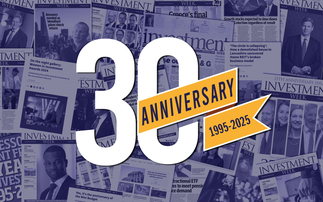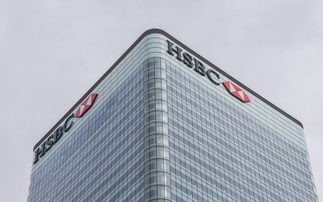Andrew Birse, Portfolio Manager at AllianceBernstein, explains the strategies he's using to find stocks with underappreciated long-term return potential in today's European markets.
1. It seems like political risk is dominating sentiment in European markets. How do you invest in regional stocks in this type of environment?
Andrew: It's impossible to ignore the political challenges facing European markets today. As bottom-up investors, we focus on the business dynamics that drive company results, and less on the macroeconomic or political environment.
Of course, country risk can affect a company's outlook. So, for example, when it comes to UK country risk related to Brexit, we're wary of companies that are vulnerable to trade disruption, currency risk and UK economic growth, such as British banks and consumer companies. Even some non-UK companies could be in danger, like Peugeot, which has significant production and sales exposure in Britain. But for other British companies with global businesses, UK country risk isn't really a problem.
Since we don't expect to have a truly differentiated insight about how a political event might play out, it would be foolish to base an investment case on that. Market reactions to political events are also unpredictable; nobody expected US stocks to rally after President Trump's election in 2016. That said, these days, we do think about how different political outcomes might affect the earnings of individual companies and aim to avoid excessive portfolio exposure to different political outcomes.
2. What attributes do you look for when searching for companies in Europe today?
Andrew: Our investment approach focuses on companies—not countries. That's because company fundamentals—earnings, cash flows, balance sheets and strategic advantages—ultimately drive stock returns.
We apply a business owner mindset to stock selection. It's very similar to the way private equity funds invest. That means we search for cheap, undervalued businesses that we aim to own for five years and then sell back to the market.
In our research, we want to find companies that aren't being given credit by the market for their future cash-flow potential. As in the examples I mentioned before, the company might be in the wrong geographic location or in an industry that's out of favour. Our investment team is particularly suited to finding these companies, because most of us come from industry or consulting backgrounds. So we really understand the business dynamics in ways that typical equity investors don't.
We look for attributes that determine business and investment success. Examples include companies that are taking self-help measures to boost margins, for example, by cutting costs or expanding product ranges. Companies with sustainable competitive advantages are very appealing in a complex macro environment. And companies in industries with improving dynamics are natural portfolio candidates.
3. How is your investing approach different than some of your competitors?
Andrew: Many equity portfolio managers use fundamental research. What's different about the way we do it is the application of the private equity-like mindset, using an internal rate of return (IRR) analysis, as well as our approach to risk management.
You don't really see IRR used in funds that invest in public markets. But IRR offers some clear advantages over research based purely on earnings, which can be easily manipulated by companies and don't always show a real picture of what's going on in the business.
The IRR is the implied discount rate that the market is putting on future cash flows. Our IRR analysis looks five years ahead, calculates the dividends and cash flows that we get throughout the ownership period, and forecasts the price at which we can sell it back to the markets. In our analysis, we apply a conservative estimate of the stock's multiple. That's important because it means we are looking for investments that can generate returns without the help of a re-rating of the stock through market gains.
On the risk side, we augment standard risk models with two unique approaches. First, when researching a stock, we talk to hedge funds which are short to hear their views. Hedge funds with short positions believe these stocks will fall in the future, and we want to know why. Getting an outside view helps us avoid any in-house bias toward a company or industry and ensures that we fully understand the risks.
Second, we apply cluster risk analysis to our portfolio exposures. Groups of stocks that may not be formally classified in the same risk category often exhibit similar behaviour patterns. This could create a cluster of risk that goes undetected by standard risk models and may hurt performance during times of stress. Applying these two risk control techniques to our portfolios has helped us deliver a distinctive and smoother pattern of returns in both growth and value market environments.
IMPORTANT INFORMATION
The ES AllianceBernstein Europe (ex UK) Equity Fund entails certain risks:
- Equity securities risk: The value of equity investments may fall as well as rise, over short or long periods, and you may get back less than you originally invested.
- Focused portfolio risk: Investing in a limited number of issuers, industries, sectors or countries may subject the portfolio to greater volatility than a portfolio which is invested in a larger, more diverse array of securities.
- Derivatives risk: The Portfolio may use financial derivative instruments which may results in increased gains or losses.
- Other risks include: Smaller capitalisation companies' risk, portfolio turnover risk, OTC derivatives counterparties risk and emerging markets risk.
- These and other risks are described in the Portfolio's prospectus.
For Investment Professional use only and not for retail. Before making an investment, investors should review the fund's full prospectus, together with the relevant Key Investor Information Document (KIID). Copies of these documents may be obtained free of charge from the AllianceBernstein website or in printed form from Equity Trustees Fund Services.
Note to All Readers: The information contained here reflects the views of AllianceBernstein L.P. or its affiliates and sources it believes are reliable as of the date of this publication. AllianceBernstein L.P. makes no representations or warranties concerning the accuracy of any data. There is no guarantee that any projection, forecast or opinion in this material will be realised. The views expressed here may change at any time after the date of distribution. For informational purposes only and does not constitute investment advice. AllianceBernstein L.P. does not provide tax, legal or accounting advice. It does not take an investor's personal investment objectives or financial situation into account; investors should discuss their individual circumstances with appropriate professionals before making any decisions. This information is issued by AllianceBernstein Limited, 50 Berkeley Street, London W1J 8HA, it is for marketing purposes. Registered in England, No. 2551144. AllianceBernstein Limited is authorised and regulated in the UK by the Financial Conduct Authority (FCA).
The [A/B] logo is a registered service mark of AB and AllianceBernstein® is a registered service mark used by permission of the owner, AllianceBernstein L.P.
© 2019 AllianceBernstein L.P.














